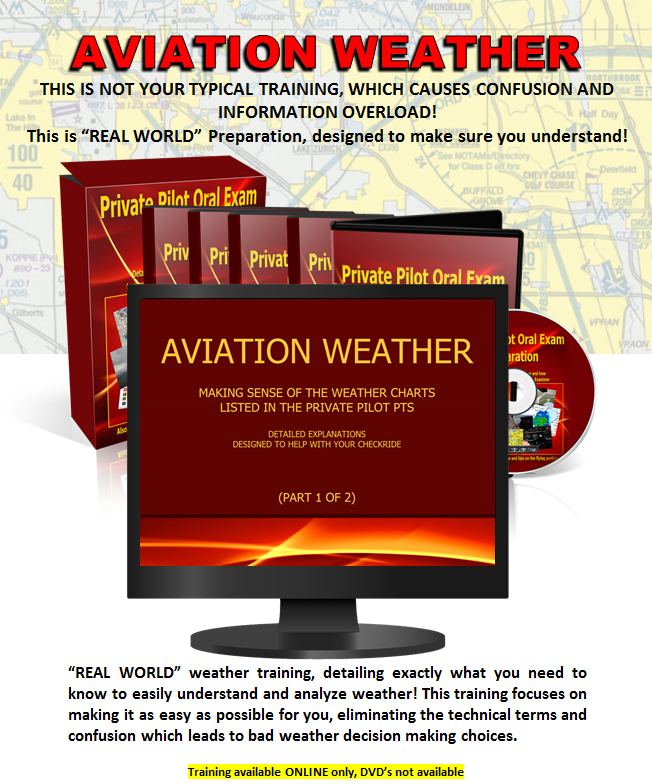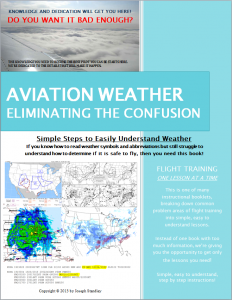by Joseph Standley | Jul 21, 2014 | All Pilots
Thinking of buying a new headset?
If you’re thinking of spending money on a nice headset and are not sure which one to get, I just have to say that I have two Zulu headsets and think they are just as good as the Bose when it comes to quality, but they are more comfortable. I wear it every day, sometimes all day long. I just wanted to give you my 2 cents for what it’s worth. Check it out here at Pilot Mall. They have lot’s of other pilot supplies too!
by Joseph Standley | Jul 10, 2014 | All Pilots, Student Pilots
COMMUNICATION WITH APPROACH , DEPARTURE, TOWER AND GROUND
Hey Student Pilots!
I made this a few years ago for a student I had that was struggling to understand what the controllers were saying. I decided to make a list of as many of the most common things said by controllers that I could think of. It made a big difference for him and really helped him to anticipate and understand what they were saying. I hope it helps you too!
Straight in runway 25
Enter a right base for 25
Plan a right downwind for 25
Number 2 following a Warrior on a 3 mile final
Cleared to land 25 (two five)
Cleared touch and go
Cleared stop and go
Cleared for the option
Extend your downwind
Continue upwind
I’ll call your base
Base your discretion
Make a right 360 for spacing
Vectors for spacing
Vectors for traffic
Report 3 Northwest
Report 2 mile final
Say altitude
Say type aircraft
Say call sign
Say position
Advise other aircraft in sight
Advise of any altitude changes
Climb maintain 3000
Maintain at or below 3000
Frequency change approved
Report back with me
Do a 180 there
Advise when ready
Say intentions
Where do you park?
Say parking
Taxi to parking
Position and Hold
Hold short landing traffic
Contact ground on point niner
Squawk vfr
Squawk 1200 (twelve hundred)
Ident
Stop altitude squawk
Recycle your transponder
I’m not receiving your mode c
Radar contact
Fly heading 240 (two four zero)
Radar contact 18(one eight) miles East
Traffic at your 10:00, 2 miles, southbound altitude indicates 3000’
Type and altitude unknown
Fly runway heading
Departure on 121.0 (one two one point zero)
Altitude your discretion
Proceed on course
Maintain present heading
Departure to the north approved
Left turn-out to the west approved
Report leaving 3000
Report passing through 3000
Caution wake turbulence
Standby
Contact ground for clearance
Contact clearance delivery
Advise when you have the weather
Advise when you have information Zulu
Contact tower
Contact departure
Taxi full length
Intersection departure
Turn right when able
Traffic has you in sight
Traffic no factor
Advise when you have the field in sight
Radar service terminated
Radar contact lost
You’re leaving my airspace
Advise on initial contact you have zulu
Contact ground on the tower frequency, positions are combined
Remain on this frequency
Stay with me
Say again
Cleared to depart 19
Cleared to depart 19 at foxtrot
Cleared to depart 19, on departure enter a right downwind for 7
Say destination / on course heading & altitude
If you need more help you can check out this video on Flying into a Control Towered Airport
For those of you getting ready for your Checkride, you may want to check this out. It’s ONE OF THE MOST REALISTIC, TRUE TO LIFE, PRIVATE PILOT CHECKRIDE PREP COURSES ANYWHERE with a Pass your Checkride Guarantee!
Fly safe!
Joe Standley
by Joseph Standley | Mar 3, 2014 | All Pilots
Is aviation weather confusing you?
I know I’ve written about this before but this is an area that will kill an inexperienced pilot or student pilot and it’s just difficult to keep reading stories about this when it can be prevented. This post is really a message from my heart. I just read a post today about a guy that was extremely lucky that he didn’t die! He made a bad decision and ended up flying into IFR conditions. This is a serious issue that must be corrected before it kills more pilots!
Why are pilots making bad choices and risking their lives?
It’s inexperience and not understanding the weather. I have written articles about it and I have written e-books about it because it is a killer. If you want to fly, you MUST know and understand aviation weather. I know it’s boring and I know you want to avoid even reading any of it but many people don’t realize that they are setting themselves up for a bad situation.
Many Pilots will eventually end up caught in bad weather!
You can minimize the risk though. I’m not talking about flying only on clear days without a cloud in the sky! This is sweeping the problem under the rug and will eventually catch up with you. When it does, you better pray. If you’ve never been caught flying in bad weather then you are in for a big surprise. My suggestion to you is to learn to understand weather better.
I am not saying this to just try to sell you something (although if I wasn’t selling anything I wouldn’t be able to afford to maintain this site and I’d have to close it), but I’m telling you because there are too many fatal aviation weather related accidents that can be prevented with a little know how.
I have free tips on this site and a very inexpensive e-lesson on weather designed to make it very simple and easy for you. If you do better with video then here’s another option for you. It’s only $24. Isn’t your life worth that? It’s not like the typical hard to understand videos using technical terms that confuse you. It’s designed so you will feel comfortable making safe “GO, NO-GO” decisions. It’s about as easy as it gets.

If you don’t want to buy it, then don’t, but at least do the best you can to learn to understand the weather so you don’t end up another statistic. I really do care and if I could afford to give away everything to help you, I would. I just want to help put an end to all these terrible aviation accidents and help people the best I can. Please check out the aviation weather training here so you can continue to learn and grow into safe pilots so we can all enjoy this for many years to come.
Take care and fly safe!
by Joseph Standley | Feb 15, 2014 | Student Pilots
How to save money while preparing for your Private Pilot CHECKRIDE!
Hey Student Pilots! I just thought I’d share this site with you. It very cool, online video training for your oral exam, and they guarantee you will pass your checkride. It is the most realistic, true to real life training you will find anywhere. Refer your student pilot friends too!
If any of you student pilots are getting close to taking your CHECKRIDE then this online training program will help you greatly! It is designed to walk you through everything you need to know to get through your CHECKRIDE. It focuses on presenting the information to the examiner, problem solving and scenario based testing. There’s also a very detailed section on analyzing weather and decision making.
They guarantee that you will pass your CHECKRIDE or you will get your money back!
They also offer some of the flight training products from this site as a bonus! The program is for U.S. pilot certification training only.
When you consider that there are 5 hours of extremely detailed training and some free bonus material for a fraction of what you’d pay an instructor for the same training, it’s a perfect way to get training for free and save money while studying for your checkride! Click the link below to check it out.
Take Care!

by Joseph Standley | Dec 16, 2013 | Pilots, Student Pilots
Safe Weather Decision Making
You have faa.gov weather publications and can find weather charts on aviationweather.gov but do you understand aviation weather good enough to make safe, “go/no go” decisions as a pilot? General aviation pilots preflight weather planning and decision making is important to your safety.
Aviation Symbols and Abbreviations
The first step to learning weather is to learn to read the weather charts. There are many abbreviations and symbols on aviation weather charts and if you don’t know what they say, then how can you analyze the weather properly? Learning aviation symbols and abbreviations takes time but it must be done. There are many FAA weather publications out there as well as private publications addressing weather symbols, abbreviations and charts. You won’t remember every single one, especially the ones you will never use or see such as dust storm if you live in the Midwest, but you should know quite a bit.
The Problem With Weather Information
Once you have a good knowledge of aviation weather symbols and abbreviations you will be able to look at the charts on aviationweather.gov or other weather sites and know what information is on them. Knowing what information is on them and knowing what they mean or how it affects you is different. The problem is that most aviation weather books out there are all the same. They explain things very technical, boring and hard to understand. That’s great for passing a written test with boring technical questions that need an answer, but it would be nice to know what it means in real life.
Learn to Anticipate Weather
In order to make good weather decisions as a pilot, you have to know how things can affect you. You have to be able to anticipate what will happen and know whether a weather forecast could change or how reliable it is. Do you cancel, just because there is an airmet for possible thunderstorms or snow in the area? Do you fly if it’s marginal VFR? You have to know the legal limits of whether you can fly to help in your decision making but just knowing the limits isn’t good enough. If the ceiling is 2000′, are you legal to fly? You may think to yourself “I can fly as long as I’m 500′ below the clouds and I have 3 miles visibility because I’m in class E airspace”. That’s great, you know the legal limit, but is it ok to do? Can it be done safely? Should you attempt it or cancel? Most publications don’t talk to you about this.
Options to Learn to Make Safe Go/No Go Decisions
It takes years of experience, comparing actual flight conditions with the weather forecasts and hands on experience to start getting real comfortable with it but there are ways you can get a head start. You can pay an instructor $30-$50 an hour to walk you through detailed steps of analyzing weather. Start reading weather charts and forecasts and comparing actual weather to forecast weather to see how accurate it is. You should know the risks and how they affect you. These are all good ways to start. Your instructor can help you with this but there are many people out there that can’t afford to pay an instructor for more hours of training so they choose to study at home to save the money. I’m all for home study as long as you are dedicated and the material is easy enough for you to understand.
An Easy Way to Learn Aviation Weather Decision Making
I know there isn’t much out there to choose from for real life thought processes to help you in your aviation weather decision making and I see students struggle with it all the time so I have written and e-book explaining things with easy to understand, simple steps to understanding how to make weather decisions. You will learn all about different types of weather and what it means to you in real life terms. You will learn what weather is dangerous and why. Do those icing airmets or snow showers affect you and if so, how? You will learn that too. It’s written in a format to help avoid all the confusion and take out all the technical terms. You still have to know what information the chart is showing you by learning the symbols and abbreviations but the rest will become very clear if you read this e-lesson. I haven’t seen anything like it and I’m sure it will really help you to understand, make safe decisions and to feel more confident in your choices. For the price of less than 30 minutes of instructor time this is a perfect solution to learning how you really need to think to make safe weather decisions.
Only $14.95

Eliminate confusion with simple steps to easily understand aviation weather

I hope you enjoy it as much as I enjoyed making it for you. I’d love to hear how it has helped you, please let me know.
Take Care and Fly Safe!





